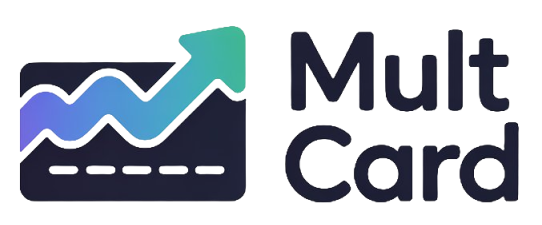In today’s fast-paced digital world, financial emergencies can strike without warning. When your car breaks down or an unexpected medical bill arrives, the need for immediate funds can be overwhelming. This is where the allure of online loans shines brightest, promising a rapid solution with just a few clicks, bypassing the lengthy processes of traditional banks.
This convenience, however, comes with its own set of complexities and potential pitfalls. While an online loan can be a vital lifeline in a genuine crisis, it’s crucial to approach it with a clear understanding of both its advantages and its significant drawbacks. Making an impulsive decision can lead to long-term financial strain, turning a short-term fix into a lasting problem. Let’s break down the reality of these digital financial tools.
The Allure of Instant Cash: The Pros of Online Loans
The primary appeal of online lenders lies in their ability to solve an immediate problem: a lack of cash. They have streamlined the lending process to cater to the modern consumer’s demand for speed and efficiency. Here are the main benefits that draw borrowers in.
Unmatched Speed and Convenience
Perhaps the most significant advantage is the sheer speed. Traditional bank loan applications can take days, or even weeks, involving in-person appointments and extensive paperwork. With an online loan, you can often complete the entire process from your couch in under an hour. The application is digital, document submission is typically done via uploads, and if approved, the funds can be deposited directly into your bank account, sometimes within the same business day.
High Accessibility for Various Credit Profiles
Many online lenders have more flexible eligibility criteria compared to traditional financial institutions. While a bank might immediately deny an applicant with a poor or limited credit score, online platforms may use alternative data points to assess risk. This opens up borrowing opportunities for individuals who might otherwise be excluded from accessing credit, providing a crucial option during an emergency.
Simplified and Transparent Application Process
The user experience is a top priority for online lenders. Their websites and apps are typically user-friendly, guiding you through a straightforward application. The questions are direct, and the requirements are clearly stated upfront. This simplicity removes much of the intimidation factor associated with borrowing money, making the process feel less daunting.
The Hidden Costs: The Cons of Online Loans
While the benefits are compelling, the downsides can be severe if not carefully managed. The convenience of quick cash often comes at a very high price, and borrowers must be aware of the risks involved.
Exorbitant Interest Rates and Fees
This is, without a doubt, the biggest drawback. To compensate for the higher risk they take on—lending to individuals with lower credit scores and without extensive collateral—online lenders charge significantly higher Annual Percentage Rates (APRs). These rates can sometimes be in the triple digits, meaning you could end up repaying two or three times the amount you originally borrowed. Hidden fees, such as origination fees, late payment penalties, and prepayment penalties, can also quickly inflate the total cost of the loan.
The Risk of a Debt Cycle
The combination of high interest rates and short repayment terms can create a dangerous debt cycle. If you’re unable to repay the loan in full by the due date, you might be tempted to “roll it over” or take out a new loan to cover the old one. This traps you in a loop where you are constantly paying off interest and fees without ever making a significant dent in the principal amount, leading to a deepening financial crisis.
Potential for Predatory Lenders and Scams
The digital lending space is vast and not always well-regulated. This environment can attract predatory lenders who use deceptive marketing, unclear terms, and abusive collection practices. They prey on desperate borrowers, locking them into unaffordable loans. It’s also essential to be vigilant for outright scams where fraudulent sites aim to steal your personal and financial information rather than provide a loan.
Online Loan vs. Traditional Bank Loan: A Quick Comparison
To put things in perspective, here is a comparative look at the key features of online loans versus traditional bank loans.
| Feature | Online Loan for Quick Cash | Traditional Bank Loan |
|---|---|---|
| Approval Speed | Minutes to hours | Days to weeks |
| Funding Time | Same day to 1-2 business days | Several business days to weeks |
| Credit Requirements | Flexible; poor to excellent credit often accepted | Strict; generally requires good to excellent credit |
| Typical APR | High to very high (can be 100%+) | Lower and more competitive (typically 5% – 36%) |
| Application Process | Fully online, minimal paperwork | Often requires in-person visits and extensive paperwork |
Navigating the Digital Lending Landscape Safely
If you decide an online loan is your only option, proceeding with caution is paramount. Here’s how to protect yourself:
- Check the Lender’s Legitimacy: Ensure the lender is registered to operate in your state. Look for a physical address and contact information on their website. Read reviews from multiple independent sources.
- Read the Fine Print: Never sign a loan agreement without reading every single word. Pay close attention to the APR, total repayment amount, due dates, and all associated fees.
- Confirm Secure Website: The website URL should start with “https://” and have a padlock icon, indicating that your data is encrypted and secure.
- Borrow Only What You Need: Resist the temptation to accept a larger loan amount than you require. The more you borrow, the more interest you will pay.
Are There Better Alternatives to a Quick Cash Loan?
Before committing to a high-interest online loan, it’s wise to explore all other possibilities. Even if they take a little more time, they can save you a significant amount of money and stress. Consider these alternatives:
- Credit Union Loans: Credit unions are non-profits and often offer personal loans (sometimes called Payday Alternative Loans or PALs) with more favorable terms and lower interest rates than online lenders.
- Negotiating with Creditors: If your emergency is a large bill, contact the creditor directly. They may be willing to set up a payment plan or offer a temporary deferment.
- Borrowing from Family or Friends: While it can be uncomfortable, a loan from a trusted person can be interest-free and come with flexible repayment terms. Just be sure to put the agreement in writing to avoid future misunderstandings.
- A 0% APR Credit Card: If you have good credit, you might qualify for a credit card with an introductory 0% APR period. This can function as an interest-free loan, provided you pay off the balance before the promotional period ends.
Making an Informed Financial Decision
An online loan can feel like a magic wand in a moment of panic, but its magic comes with a hefty price. The convenience is undeniable, but the potential for high costs and a cycle of debt is a serious risk that cannot be ignored. It’s a tool that should be reserved for true, dire emergencies when all other, more affordable options have been exhausted.
Before you click “apply,” take a deep breath and assess the situation objectively. Understand the total cost of borrowing and ensure you have a solid, realistic plan for repayment. For more guidance on responsible borrowing, it is crucial to fully understand the pros and cons of using an online loan for quick cash from authoritative sources like the Consumer Financial Protection Bureau, which provides unbiased information to help you protect your financial health.




